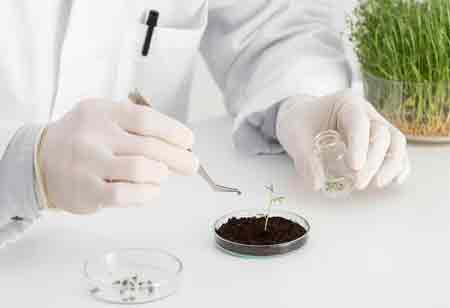Thank you for Subscribing to Agri Business Review Weekly Brief
Translating Research on Organic Phosphates into Field Practices
Sustainable agriculture focuses on organic phosphates, enhancing soil health and nutrient cycling through management practices that promote microbial activity and mineralization.

By
Agri Business Review | Thursday, December 18, 2025
Stay ahead of the industry with exclusive feature stories on the top companies, expert insights and the latest news delivered straight to your inbox. Subscribe today.
Fremont, CA: The foundational role of phosphorus (P) in plant growth and agricultural productivity is indisputable. While inorganic phosphate fertilizers have long been the staple, growing interest in sustainable agriculture and soil health has spotlighted the potential of organic phosphates. Decades of intensive laboratory and controlled environment research have illuminated the complex biogeochemical cycling of these compounds, paving the way for the development of practical, environmentally sound field strategies. The successful translation of this fundamental knowledge into actionable farm practices is a cornerstone of modern sustainable nutrient management.
The journey begins with an understanding of how organic phosphorus, which constitutes a significant fraction of the total P in soil, becomes bioavailable. Research has meticulously characterized the key enzymes—phosphatases—produced by plant roots and microorganisms that are responsible for mineralizing organic P into plant-usable inorganic forms (orthophosphate). The rate and efficiency of this process are highly dependent on environmental factors, soil type, and the composition of the microbial community.
Managing the Soil Environment for Enhanced Mineralization
Translating this biochemical understanding involves strategically managing the soil environment to favor these natural mineralization processes. For instance, studies on the activity of phosphatases under varying pH and moisture regimes provide clear guidelines for soil amendment and irrigation practices. Maintaining an optimal pH range, typically near neutral, enhances the activity of many broad-spectrum phosphatases, effectively accelerating the conversion of organic P reserves into available nutrients. Similarly, maintaining consistent, moderate soil moisture—avoiding extremes of waterlogging or severe drought—ensures a favorable environment for the microbial populations that drive this crucial step.
Research into the organic P pools has yielded insights into selecting and managing organic amendments. Different organic sources, such as composts, manures, and plant residues, contain varying concentrations and forms of organic P, each with a distinct mineralization rate. By analyzing the C:P ratio and the stability of the organic molecules in the amendment, scientists have established principles for determining appropriate application rates and timing. Applying materials with a relatively narrow C:P ratio, for example, is a practice derived from the knowledge that this favors rapid microbial breakdown and P release, providing a predictable nutrient supply to the crop.
Cultivating Biological Functionality
Ultimately, the goal is to cultivate a biologically active and nutrient-cycling efficient soil ecosystem. This involves practices that nourish the soil's native microbial community. For example, ensuring a continuous supply of diverse carbon sources through crop rotation, cover cropping, and minimal tillage sustains a robust and diverse population of P-solubilizing and P-mineralizing microorganisms. This biologically enhanced soil functionality acts as a slow-release phosphate reservoir, reducing the reliance on external inorganic inputs.
The transition from controlled laboratory experiments to large-scale agriculture is founded on integrating these practices into a holistic soil fertility management plan. This integrated approach leverages natural biogeochemical processes—the very mechanisms dissected in the lab—to enhance the intrinsic capacity of the soil to feed the crop. The result is a system where the soil itself is a nutrient-supplying entity, built upon the solid foundation of scientific research into organic phosphate cycling.





